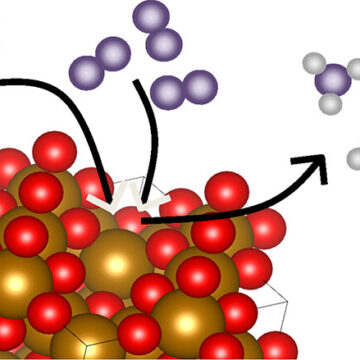Ammonia is a critical ingredient in many important industrial and agricultural applications. The Haber–Bosch process is the primary process for large-scale ammonia production. A new study uses an experimental–theoretical approach to uncover how interfacial chemistry at the magnetite–water interface drives ammonia synthesis under ambient temperature and pressure.
The Advanced Light Source is a U.S. Department of Energy scientific user facility at Lawrence Berkeley National Laboratory. Our mission is to advance science for the benefit of society by providing our world-class synchrotron light source capabilities and expertise to a broad scientific community.
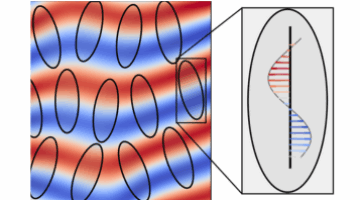
Nematic Magnetic Helices Fluctuate at Different Tempos
During a series of experiments at the ALS, researchers identified helical magnetic spins that fluctuate at different time scales during a phase transition as a function of temperature in a nematic iron germanium thin film. The results provide a framework for characterizing exotic phases, which may have interesting optical and transport properties for microelectronics and spintronics. Read more »![]()
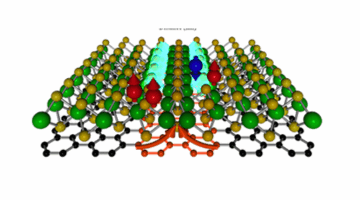
Separating an Electron into Waves of Spin and Charge
Researchers are exploring how a thin film can host a Tomonaga–Luttinger liquid, which separates an electron’s charge and spin. The research findings could contribute to the development of ultra-compact and energy-efficient technologies. Read more »
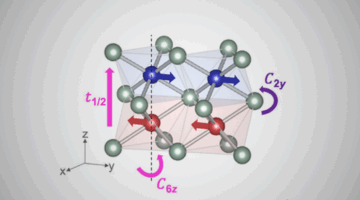
The Quest for an Altermagnet
Researchers determine the unique electronic structure of altermagnets, which offers numerous benefits in creating energy-efficient devices based on spin-polarized electron currents. Understanding how altermagnetism works could contribute to the development of next-generation memory, logic, or sensing devices that are faster and consume less power. Read more »
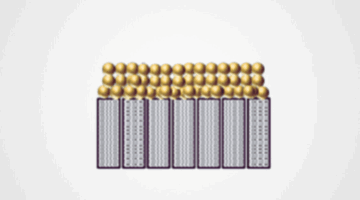
Characterizing Membrane Fouling with Operando Experiments
Membrane filtration offers a cost-effective, energy-efficient approach to purify and desalinate water, but fouling limits the performance of these devices. A new study explored the new experimental design that allows one to study the dynamic fouling process in real time to improve the field’s understanding of how materials deposit, accumulate, and/or crystallize on the membrane’s surface. Read more »![]()
Recent High-Impact Publications
- Girotto, G.Z., M. Jaugstetter, D. Kim, L.P. Matte, T.P. Mishra, M.C. Scott, R.M. Martins, A.R. Muniz, M. Salmeron, S. Nemsak, and F. Bernardi, “Shapeshifting Nanocatalyst for CO2 Conversion,” Advanced Materialse09814 (2025), doi:10.1002/adma.202509814 (September 18, 2025).
- Santhosh, S., P. Corbae, W. Yanez, S. Ghosh, C.J. Jensen, A.V. Fedorov, M. Hashimoto, D. Lu, J.A. Borchers, A.J. Grutter, T.R. Charlton, S. Islam, D. Golovanova, Y. Zhao, A. Tauraso, A. Richardella, B. Yan, K.A. Mkhoyan, C. Palmstrøm, Y. Ou, and N. Samarth, “Altermagnetic Band Splitting in 10 nm Epitaxial CrSb Thin Films,” Advanced Materialse08977 (2025), doi:10.1002/adma.202508977 (September 6, 2025).
- Swain, A., L.A. Barrios Moreno, Y. Nelyubina, S.J. Teat, O. Roubeau, V. Novikov, and G. Aromi, “Encapsulation Enhances the Quantum Coherence of a Solid-State Molecular Spin Qubit,” Angewandte Chemie International Editione202510603 (2025), doi:10.1002/anie.202510603 (September 1, 2025).
- Olenginski, L.T., A.J. Wierzba, S. Laursen, and R.T. Batey, “Designing small molecules targeting a cryptic RNA binding site through base displacement,” Nature Chemical Biology (2025), doi:10.1038/s41589-025-02018-8 (August 29, 2025).
- Tanner, C., V. Wall, J. Portner, A. Jeong, A. Das, J. Utterback, L. Hamerlynck, J. Raybin, M. Hurley, N. Leonard, R. Wai, J. Tan, M. Gababa, C. Zhu, E.G. Schaible, C.J. Tassone, D.T. Limmer, S.W. Teitelbaum, D.V. Talapin, and N.S. Ginsberg, “Enhancing nanoscale charged colloid crystallization near a metastable liquid binodal,” Nature Physics (2025), doi:10.1038/s41567-025-02996-5 (August 26, 2025).
